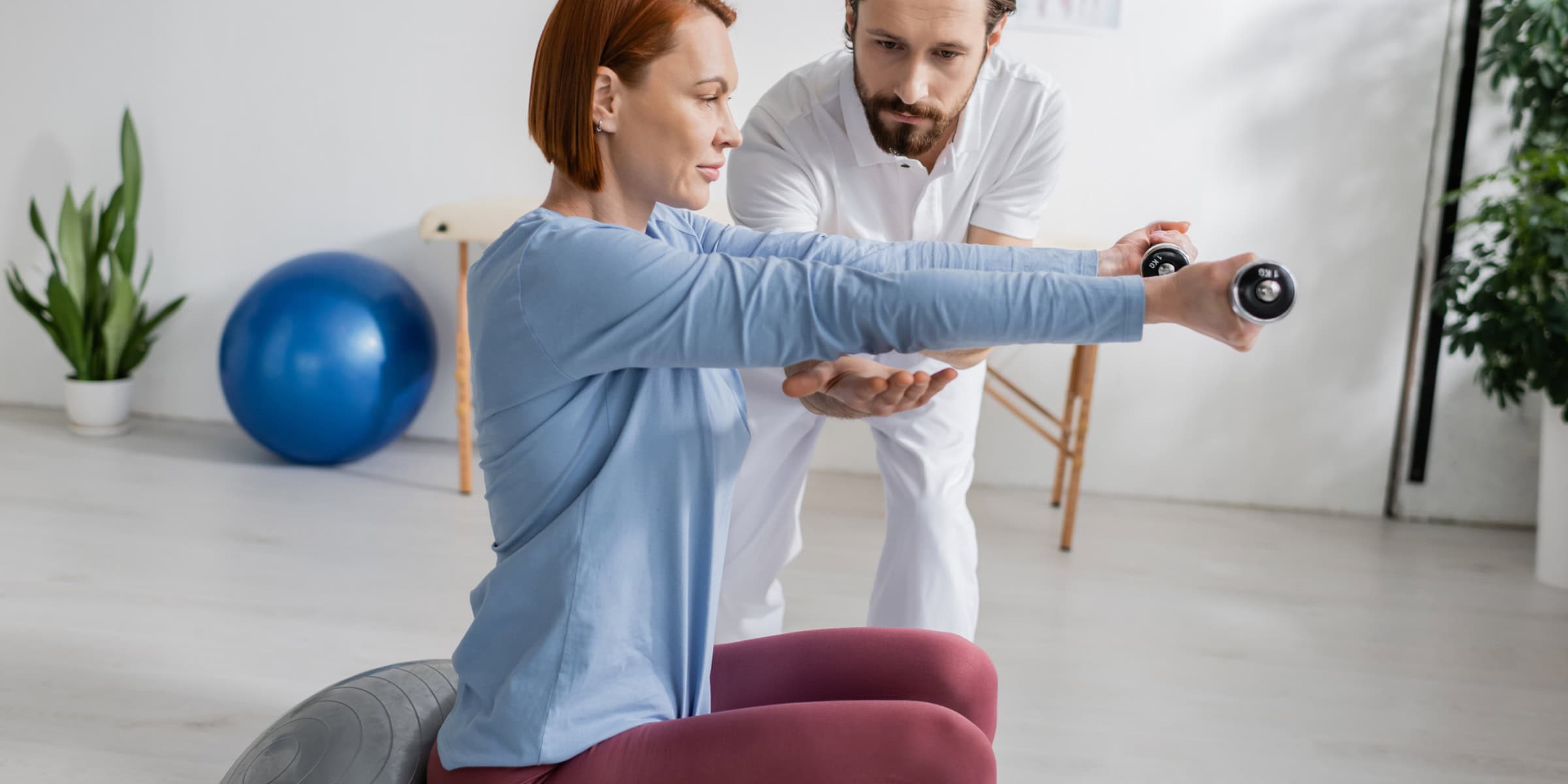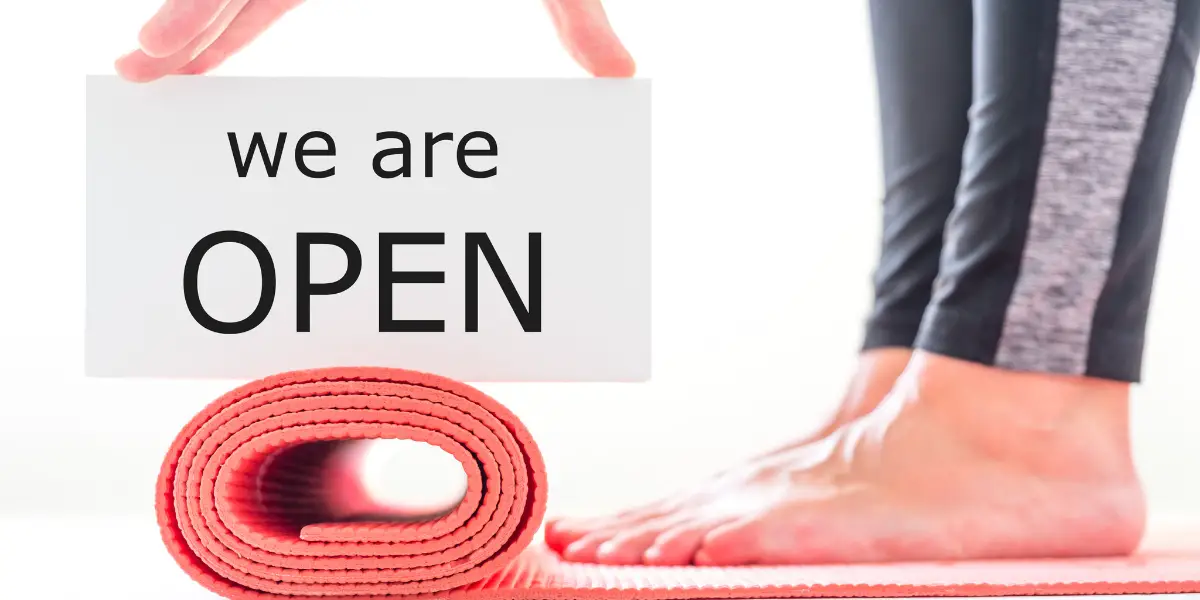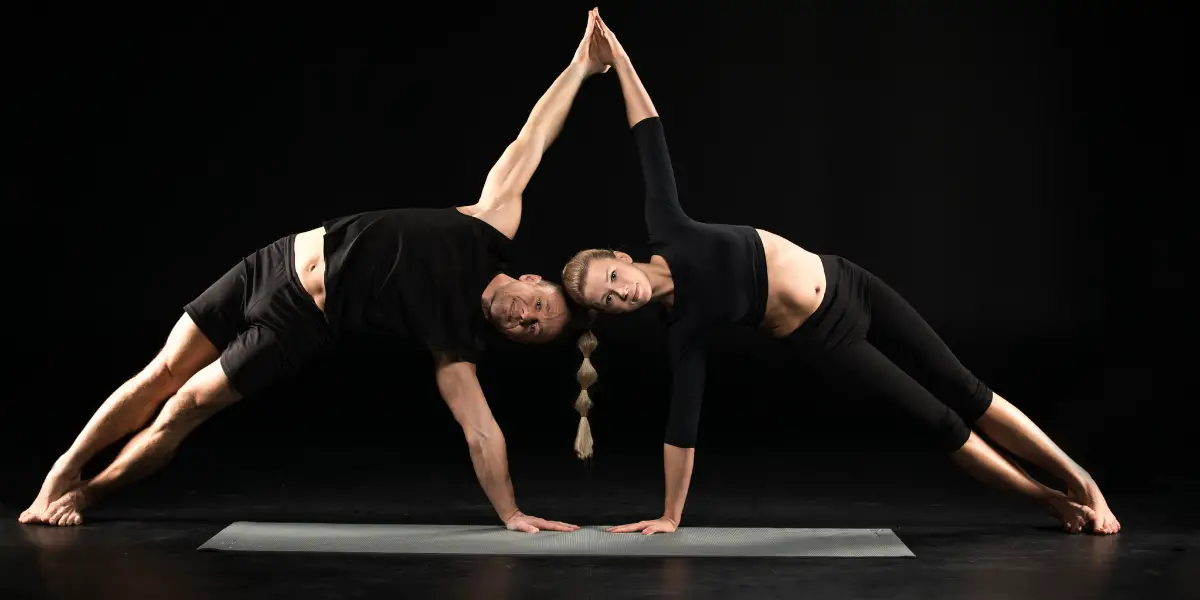The role of Pilates in rehabilitation and injury prevention for athletes is crucial. Pilates serves as a firm foundation for a lofty skyscraper, providing numerous advantages that can revolutionize an athlete’s pursuit.
This flexible exercise regimen focuses on core strength, flexibility, and body consciousness. By incorporating Pilates into a training program, athletes can enhance their body’s capability to recover and construct strength in necessary areas.
Furthermore, Pilates can be tailored to specific sports, optimizing performance on the field, court, or track. Whether an athlete is recuperating from an injury or striving to prevent one, Pilates has their back. So, get ready to take your athletic career to unprecedented heights with the might of Pilates.
Understanding the Benefits of Pilates for Athletes
You’ll be astounded by the impact Pilates can have on your athletic performance and safeguard you from future harm. Pilates is not merely a fashionable exercise; it has been proven to be immensely advantageous for athletes.
One of the essential benefits of Pilates is its capacity to boost flexibility. As an athlete, having a supple body is essential for optimal performance. Pilates exercises concentrate on lengthening and stretching the muscles, improving their range of motion and permitting you to move more freely. This augmented flexibility can augment your ability to perform numerous sports movements, such as reaching, kicking, or swinging.
An additional benefit of Pilates for athletes is the enhancement of body cognition. Through the practice of Pilates, you’ll cultivate a better comprehension of how your body moves and operates. This heightened body cognition permits you to recognize and modify movement imbalances, which can forestall injuries. By being cognizant of your body’s alignment and movement patterns, you can make accommodations to guarantee proper technique and diminish the risk of overuse injuries.
Incorporating Pilates into your training routine can provide you with a stable foundation for injury prevention and improved performance. Pilates as a rehabilitation tool for athletes takes this concept even further. By addressing muscle imbalances and inadequacies, Pilates can help athletes recuperate from injuries and regain strength. It can also be used as a preventative step to anticipate future injuries by fortifying the supporting muscles around vulnerable areas.
Venturing into the subsequent section about ‘pilates as a rehabilitation tool for athletes’, it is evident that Pilates offers an all-inclusive approach to both injury prevention and recuperation.
Pilates as a Rehabilitation Tool for Athletes
Engaging in Pilates can be an effective way for athletes to rebuild their bodies after a setback, moving away from the idea of ‘no pain, no gain’. Research has exhibited the use of Pilates as a beneficial form of post-operative rehabilitation for athletes. The movements in Pilates are controlled and focus on core strength, providing stability and balance, while the low-impact nature of Pilates reduces stress on the joints.
In a survey conducted by the Journal of Bodywork and Movement Therapies, athletes who had undergone surgeries on their knee or shoulder reported increased flexibility and range of motion as a result of using Pilates-based exercises. Moreover, they noted that using Pilates accelerated the process of regaining their pre-injury strength and function, when compared to traditional rehabilitation methods. These exercises target specific muscles, aiding in the recovery of strength and avoiding muscle imbalances that may cause further injuries.
It is essential to note the role of Pilates in increasing body awareness and promoting proper alignment, which are key factors in averting injuries for athletes.
How Pilates Can Aid in Injury Prevention
Pilates can greatly help in injury prevention through various ways. Firstly, it focuses on rectifying muscular discrepancies and improving posture. This is important because imbalances in muscles and poor posture can increase the risk of injury.
Secondly, Pilates helps in generating functional muscle power and stability. By strengthening the core and improving overall alignment, it provides athletes with the physical foundation necessary for performing movements efficiently and with reduced risk of injury.
Lastly, Pilates incorporates specific avoidance techniques and tactics. It includes precise warm-up and cool-down exercises, which are essential for preparing the body for physical activity and aiding in the recovery process. These techniques further reduce the likelihood of injury.
In summary, Pilates is a valuable tool for injury prevention as it addresses muscular imbalances, improves stability, and incorporates specific avoidance strategies. By practicing Pilates regularly, athletes can significantly reduce their risk of getting injured.
Correcting Muscular Imbalances and Alignment
Envision feeling powerful, properly arranged, and adjusted, prepared to handle any athletic test that comes your way.
Pilates can help you accomplish this by rectifying muscle lopsided characteristics and enhancing stance. Muscle imbalances happen when certain muscles are overactive and others are latent, prompting awful arrangement and expanded danger of damage.
By incorporating explicit Pilates activities, you can target and reinforce powerless muscles while extending and discharging tight ones, at last reestablishing equalization to your body.
Besides, Pilates centers around right arrangement, which is critical for forestalling wounds and amplifying execution. Through exact developments and cognizant mindfulness of your body, you can improve your stance, adjust your joints, and improve your development designs.
As you address these lopsided characteristics and improve your arrangement, you will be better prepared to fabricate utilitarian quality and strength, which we will investigate in the following area.
Building Functional Strength and Stability
Strengthening and stabilizing through Pilates involves targeting weak muscles, lengthening tight ones, and improving alignment. This ultimately enhances performance and reduces the risk of injury.
Pilates exercises focus on improving functional mobility, which is the ability to move efficiently in everyday activities and sports. By incorporating movements that mimic real-life activities, Pilates helps athletes develop strength and stability that can be easily applied to their sport.
One key aspect of Pilates is its emphasis on core strength. A strong core is essential for maintaining proper alignment and stability while performing dynamic movements. It helps athletes generate power, transfer energy between body segments, and maintain balance.
Numerous studies have shown that Pilates can improve core strength, flexibility, and balance, leading to enhanced performance and a decreased risk of injury.
However, it is important to note that Pilates exercises should be combined with other injury prevention techniques and strategies for a comprehensive approach. In the next segment, we will discuss these additional methods in order to provide a well-rounded approach to injury prevention.
Injury Prevention Techniques and Strategies
Incorporating a range of tactics and strategies can assist athletes in protecting themselves from potential injuries. Injury prevention techniques and strategies are a pivotal part of training and rehabilitation for athletes.
Exercise choice is a major element of injury prevention, as it permits athletes to direct particular muscle groups and areas of vulnerability. Focusing on drills that strengthen stability, strength, and elasticity can reduce the likelihood of injuries.
Moreover, training procedures such as proper warm-up and cool-down regimens, steady progression, and suitable rest and recovery times are essential in injury prevention. These protocols help athletes condition their bodies for strenuous physical activity and reduce the chances of overuse injuries.
Implementing these injury prevention techniques and strategies can enable athletes to optimize their performance and reduce the risk of setbacks. Transiting to the following section about the role of Pilates in sports-specific training, athletes can boost their injury prevention efforts through this specialized form of exercise.
The Role of Pilates in Sports-Specific Training
Pilates is a game-changer for athletes because it helps them refine their motions and enhance their performance on the field. It offers a unique approach to sports-specific training by replicating the movements and muscle groups used in a particular sport.
For example, tennis players can benefit from Pilates exercises that focus on rotational movements and core stability, while soccer players can improve agility, balance, and lower body strength.
In addition to sports-specific exercises, Pilates also includes sport-specific conditioning. This type of training involves preparing the body to meet the specific demands of a sport, such as increasing flexibility, strengthening specific muscle groups, and improving overall body control.
By incorporating Pilates into their workout routine, athletes can enhance their equilibrium, stability, and body awareness, reducing the risk of injuries and improving their overall performance.
Moving on to the next section about “Pilates for cross-training and conditioning,” athletes can also use Pilates as a secondary form of exercise to enhance their overall fitness and conditioning.
Pilates for Cross-Training and Conditioning
If you’re an athlete looking to better your performance, Pilates could be an incredible inclusion to your cross-training routine.
Pilates provides supplementary exercises that can help bolster your strength, elasticity, and balance, all of which are necessary for athletic capability.
Additionally, Pilates is a comprehensive conditioning workout that targets multiple muscle groups in unison, helping you to build up general stamina and power.
Lastly, Pilates can also have a part in injury prevention, especially for athletes engaged in high-impact sports, as it concentrates on core stability and precise alignment, which can help decrease the danger of common sports-related traumas.
Complementary Exercises for Athletes
To maximize athletic performance and reduce the risk of injuries, it’s important to incorporate complementary exercises into your workout routine. These exercises target different muscles and movement patterns than those used in your core sport or activity. By doing these exercises, you can improve your overall power, flexibility, and stability, which can directly translate to better performance on the court or field.
Examples of complementary exercises for athletes include yoga, swimming, and weight training. Yoga can improve flexibility and joint stability, while swimming provides a low-impact aerobic workout that can enhance endurance. Weight training, using weights or resistance bands, can strengthen specific muscle groups and help prevent imbalances or weaknesses that can lead to injuries.
By incorporating these injury prevention techniques into your training program, you can ensure that your body is well-rounded and prepared for the demands of your sport or activity.
Moving on to the next section about full-body conditioning and endurance, it’s important to note that complementary exercises are just one part of a comprehensive training regimen. In the following section, we will explore how Pilates can be used for full-body conditioning and endurance, further enhancing athletic performance.
Full-Body Conditioning and Endurance
Incorporating full-body conditioning and endurance activities is essential for maximizing athletic capability and reducing the risk of harm. Pilates, with its focus on full body flexibility and core strength, is an excellent choice for athletes looking to improve their overall conditioning. Here are some key benefits of including Pilates in your training regimen:
- Enhanced core strength: Pilates exercises target the deep muscles of the core, helping to stabilize and support the spine. This increased core strength can improve overall athletic performance and reduce the risk of injuries.
- Improved flexibility: Pilates movements focus on stretching muscles and improving joint mobility, which can contribute to increased flexibility and range of motion. This can be particularly beneficial for athletes who require a wide range of motion in their sport.
- Increased endurance: Pilates workouts often involve holding positions and engaging in slow, controlled movements, which can help build muscular endurance. This can be advantageous for athletes who participate in endurance-based sports.
By adding Pilates to your training program, you can improve your full-body conditioning and endurance, setting yourself up for success in high-impact sports and reducing the risk of injuries.
Injury Prevention in High-Impact Sports
Now that we have investigated how Pilates can be utilized for full-body conditioning and endurance, let’s examine its part in injury prevention, especially in high-impact sports.
Athletics such as basketball, soccer, and running can put a great pressure on an athlete’s body, escalating the risk of harm. Yet, incorporating Pilates into an athlete’s exercise regimen can help alleviate these hazards.
Pilates centers on strengthening the core, increasing flexibility, and improving body consciousness, all of which are critical for stopping athletic traumas. By toning the core muscles, Pilates helps secure the body and upgrade overall biomechanics, reducing the effect on joints and diminishing the probability of wounds.
Additionally, the focus on elasticity helps sustain a harmonized range of motion, reducing the chance of overuse traumas.
Now, let’s inspect how to incorporate Pilates into an athlete’s exercise regimen for ideal results.
Incorporating Pilates into an Athlete’s Training Routine
When incorporating Pilates into an athlete’s training routine, it is important to find the right classes or trainers that meet your specific goals and needs. Look for professionals who have experience working with athletes and understand the challenges of your sport.
Designing a Pilates program that focuses on improving flexibility, core strength, and balance is crucial for optimal performance and injury prevention.
It is also important to balance Pilates with other training methods to ensure a well-rounded approach to your athletic development. This will help prevent overtraining and ensure that you are not neglecting other important aspects of your sport-specific training.
Finding the Right Pilates Classes or Instructors
When searching for the ideal Pilates class or instructor, it is important to consider a few key factors. First and foremost, look for instructors who have proper credentials from reputable Pilates organizations. This will ensure that they have the necessary education and expertise to guide you safely and effectively.
Next, pay attention to the ambiance of the studio. A clean and well-maintained studio, equipped with the necessary Pilates equipment, is essential for a positive experience. Additionally, a welcoming and supportive environment can greatly enhance your overall enjoyment of the class.
Lastly, consider the range of classes offered by the studio. Look for a studio that provides a variety of classes to cater to different levels of experience and fitness goals. This will allow you to progress at your own pace and focus on specific areas of improvement.
By carefully selecting the right Pilates class and instructor, you can begin to build a Pilates program that meets your individual needs and goals.
Designing a Pilates Program for Individual Needs
Designing a Pilates program for individual needs involves constructing a routine that corresponds with physical objectives and targets areas for improvement. Personalized instruction is key to maximizing Pilates for recovery and injury prevention.
A specialized Pilates trainer can assess body inequalities and form a program to address these issues, helping to improve posture, flexibility, and core strength.
By incorporating exercises tailored to individual needs, sports performance can be enhanced and the risk of future injuries decreased.
This Pilates system ensures that exercise is maximized and desired results are achieved. When integrating Pilates with other training methods, it is important to find a balanced integration that complements overall fitness regime.
Balancing Pilates with Other Training Modalities
Finding a balance between Pilates and other training modalities can significantly boost your overall physical condition and enhance performance in your chosen sport. Research has shown that athletes who incorporate Pilates into their exercise routine experience a 34% decrease in the chance of future injuries.
Combining Pilates with strength training is especially beneficial for athletes. It helps cultivate core stability, increase flexibility, and strengthen muscular strength and endurance. Pilates exercises focus on bolstering the deep stabilizing muscles, which are necessary for maintaining proper posture and alignment during sports activities.
By integrating Pilates into your routine, you can improve your body perception, balance, and coordination, all of which are essential for peak athletic performance. Additionally, Pilates can help prevent muscle imbalances and address any current muscular deficiencies, reducing the risk of overuse injuries.
Therefore, blending Pilates with strength training can be a valuable addition to an athlete’s training program. It promotes injury prevention and enhances overall performance.
Final Thoughts
Incorporating Pilates into your training regimen can have numerous benefits for athletes, including facilitating rehabilitation, preventing injury, and enhancing sport-specific training.
Even just a few sessions a week can lead to significant improvements in power, flexibility, and overall performance.
Don’t let concerns about time commitment hold you back, as the rewards of Pilates are well worth it.
Start integrating Pilates into your training routine today and experience the transformative effects it can have on your athletic journey.




